Sophie Calle
Sophie Calle
In 2020, the COVID-19 pandemic forced the Mitsubishi Ichigokan Museum, Tokyo (MIMT) to cancel a collaborative exhibition with leading contemporary French artist Sophie Calle—a poignant absence. Four years later, the show will finally go ahead.
Since she began her creative endeavors in 1979, Calle has produced numerous works combining text, photographs, video, and other media, like True Stories (1994), which gathers a series of short autobiographical texts and photos, and Exquisite Pain (1999), which scrutinizes Calle’s own experience of heartbreak and recovery. In the series Blind (1986) and Last Seen (2010), she explores what it means to see, leading into an examination of vision and perception, loss and absence—matters that lie at the very foundation of art. Taking Calle herself and her connections with others as their motifs, the artist’s bold and enigmatic works blur the boundary between fact and fiction. Always full of surprises, they leave a powerful impression on viewers’ hearts and minds.
Addressing the theme of ‘absence’—which indeed runs through many of Calle’s works—this exhibition showcases works from major series combining text and photographs, such as Autobiographies, which relates to the deaths of herself and her family, and Because, in which curtains embroidered with writing are lifted up to reveal photographs hidden behind them. Visitors will have the opportunity to experience the diversity of Calle’s creative endeavors in works such as What Do You See?(2013), prompted by the theft of several art works from a museum, and Picassos in lockdown(2023), invoking the absence of Picasso (and his works), as well as the haunting In Memory of Frank Gehry’s Flowers(2014) and Voir la mer(2011).
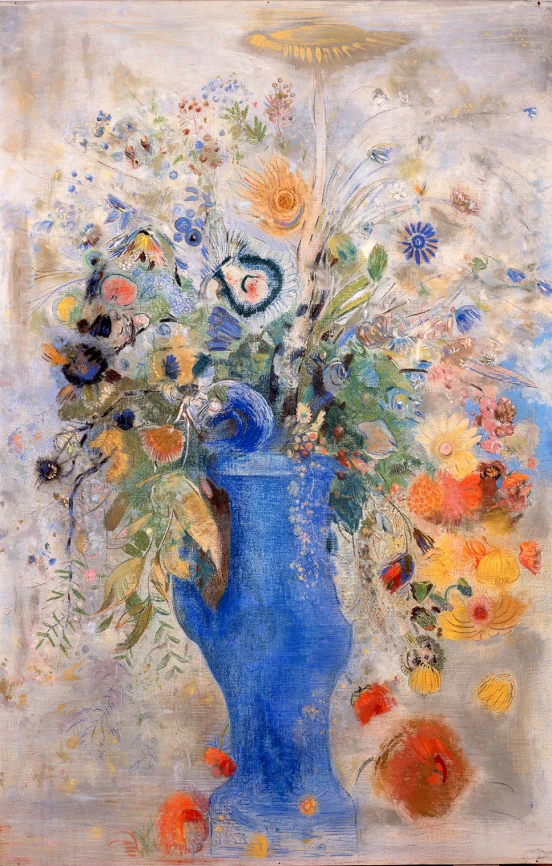
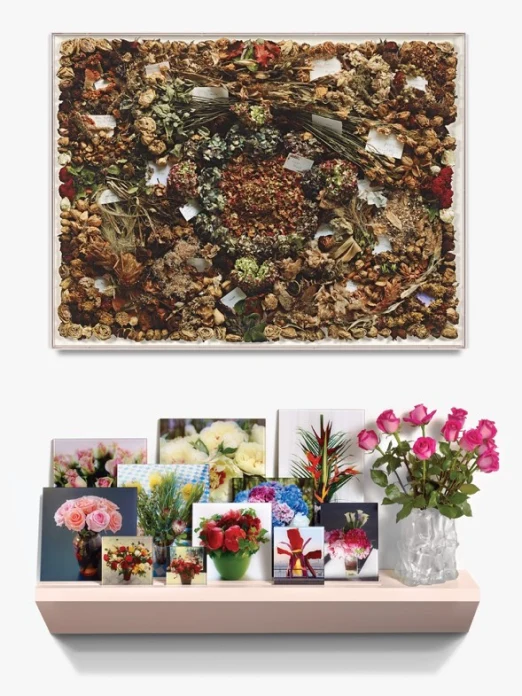
Installation photo : Douglas M. Parker, courtesy of the artist, Perrotin and Gemini G.E.L.LLC, ©Sophie Calle / © ADAGP, Paris & JASPAR, Tokyo, 2024 G3622
Sophie Calle’s Grand Bouquet
In 2010, MIMT acquired Grand Bouquet, a masterpiece executed in pastels by fin de siècle French artist Odilon Redon. This massive work—2.5 meters high and 1.6 meters wide—is only exhibited for short periods of time, then returned to a quiet spot behind an exhibition room wall.
When Calle visited MIMT in 2019, she was inspired by the absence of Redon’s work to complete her own Grand Bouquet, drawing on conversations with museum staff and other related personnel to create a work in which text and images commingle. Calle has donated her new work to MIMT, where it will be shown for the first time at the exhibition. Viewers will find themselves revisiting notions of existence and absence in relation to museums, collections, and indeed artworks themselves.
For the first public showing of this work, the exhibition will also feature In Memory of Frank Gehry’s Flowers (2014), a work by Calle inspired by the numerous bouquets of flowers that she received from famous architect Frank Gehry at her solo exhibitions.
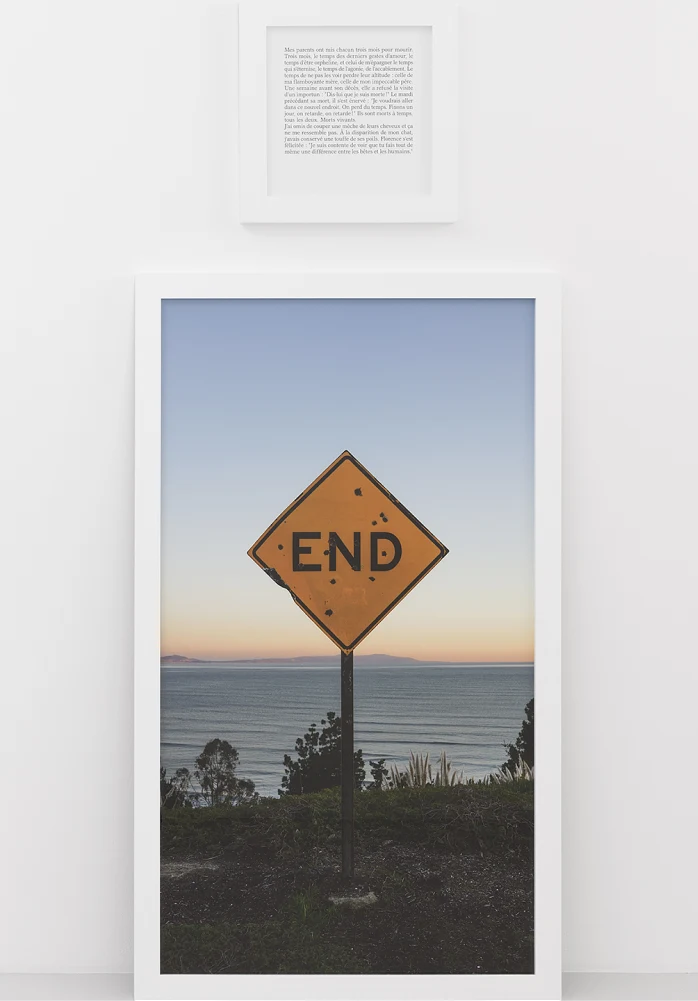
FR : Ma mère, mon chat, mon père (série Autobiographies )
Installation photo : Claire Dorn, courtesy of the artist and Perrotin ©Sophie Calle /©ADAGP, Paris & JASPAR, Tokyo, 2024 G3622
Autobiographies
This work, composed of text and photograph, concerns the recent deaths of Sophie Calle’s mother, father, and cat. Using the death of a beloved person or pet, or one’s own death as a theme, Calle invites the viewer into a private realm, even as she maintains a certain distance from reality. My Mother, my Cat, my Father (2017) features a photograph of a road sign that reads “END,” accompanied by text about the final days of the departed objects of affection. In Today my mother is dead (2013), Calle combine’s phrases quoted from her diary and the diary of her mother with the image of a sculpture lying on the ground.
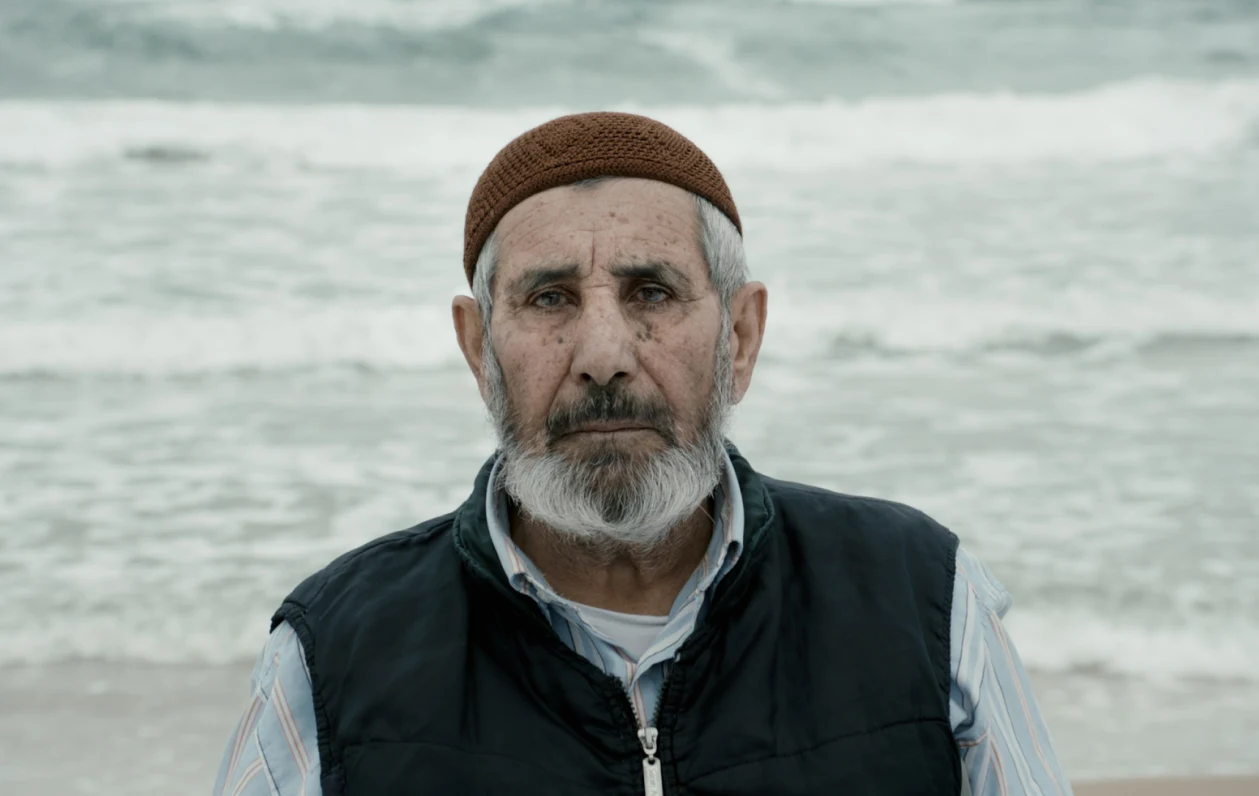
FR: Le Vieil homme, (série Voir la mer)
Courtesy of the artist and Perrotin ©Sophie Calle /©ADAGP, Paris & JASPAR, Tokyo, 2024 G3622
Voir la mer
This work relates to vision and perception, themes that Sophie Calle has spent many years exploring. It captures the moment in Istanbul, Turkey when 14 men and women, young and old, behold the sea for the first time. The work was inspired when Calle learned that there were poor people living in inland parts of the city who had never seen the sea, despite the fact that Istanbul is practically surrounded by water, with the sea never more than a short distance away.

FR : « Le Concert » Vermeer (série Que voyez-vous ? )
Installation photo : Claire Dorn, courtesy of the artist and Perrotin ©Sophie Calle /©ADAGP, Paris & JASPAR, Tokyo, 2024 G3622
What do you see?
Que voyez-vous ?
On 18 March 1990, artworks by Rembrandt, Vermeer, and Manet were stolen from the Isabella Stewart Gardner Museum in Boston, but the empty frames of several of the stolen works were left behind. In 1994, to highlight the “absence” of these works, these empty frames were hung again, precisely where they had been before the theft. In creating this work, inspired by this curious incident, Calle is asking the museum’s curators, security guards, and visitors what they can see inside the frames of the absent work.
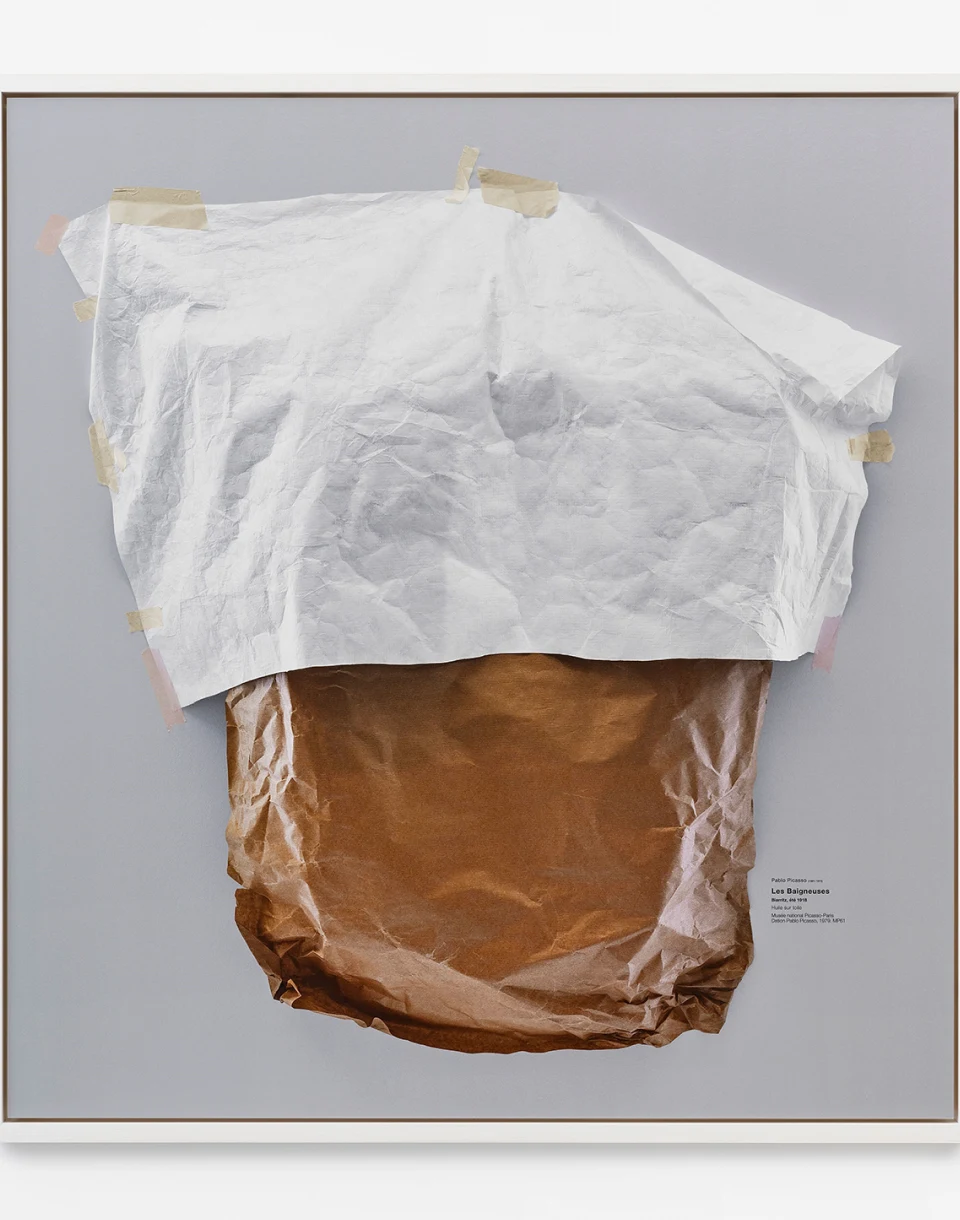
FR : Pablo Picasso, Les Baigneuses, été 1918 (série Les Picasso confinés )
Installation photo : Claire Dorn, courtesy of the artist and Perrotin ©Sophie Calle /©ADAGP, Paris & JASPAR, Tokyo, 2024 G3622
Picassos in lockdown
Les Picasso confinés
In 2023, the Musée Picasso in Paris called on Sophie Calle to organize an exhibition to commemorate the 50th anniversary of Pablo Picasso’s death. For a theme, Calle came up with the idea of focusing on Picasso’s “absence.” This work, photographed by Calle herself, was inspired when she saw Picasso’s paintings covered in brown paper to protect them while the museum was closed during the COVID-19 pandemic. Although the existence of Picasso’s creation is attested to by the barely visible title, the work itself is concealed and seems to be confined.
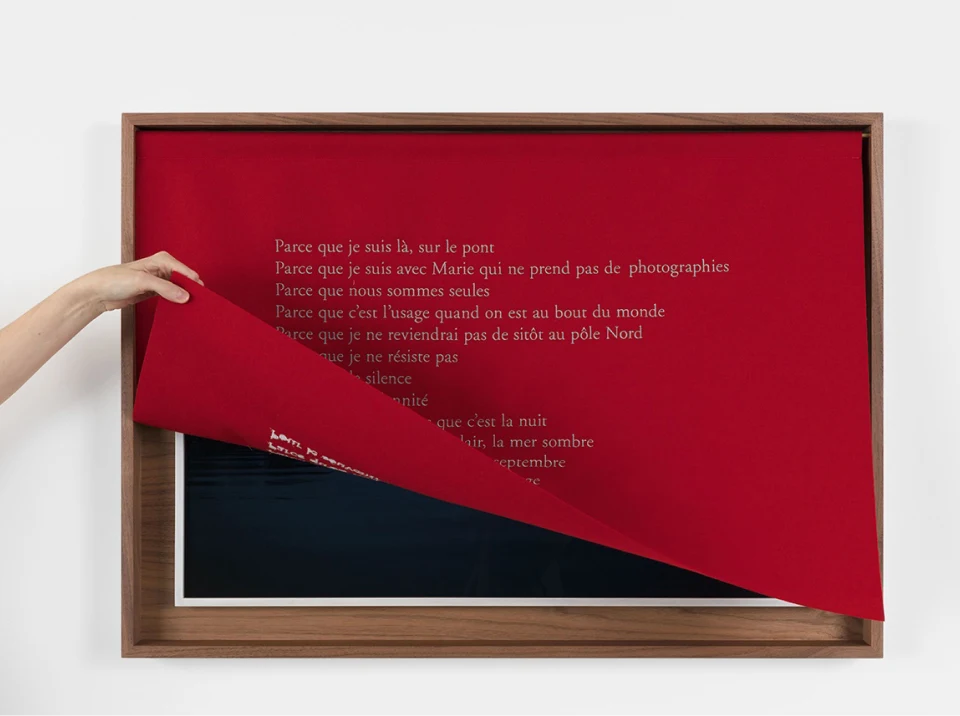
FR: Pôle Nord (série Parce que )
Installation photo : Claire Dorn, courtesy of the artist and Perrotin ©Sophie Calle /©ADAGP, Paris & JASPAR, Tokyo, 2024 G3622
Because
Parce que
A piece of cloth, embroidered with text, that hangs in front of a framed photograph is turned up to unveil a photograph. The text on the cloth, which begins with the words Parce que (Because), explains why the image exists and why the artist chose the specific moment or place. In this unique work, the photograph’s raison d’être is revealed even before the image is seen, thereby provoking questions about the act of viewing an image and the relationship between text and image.
